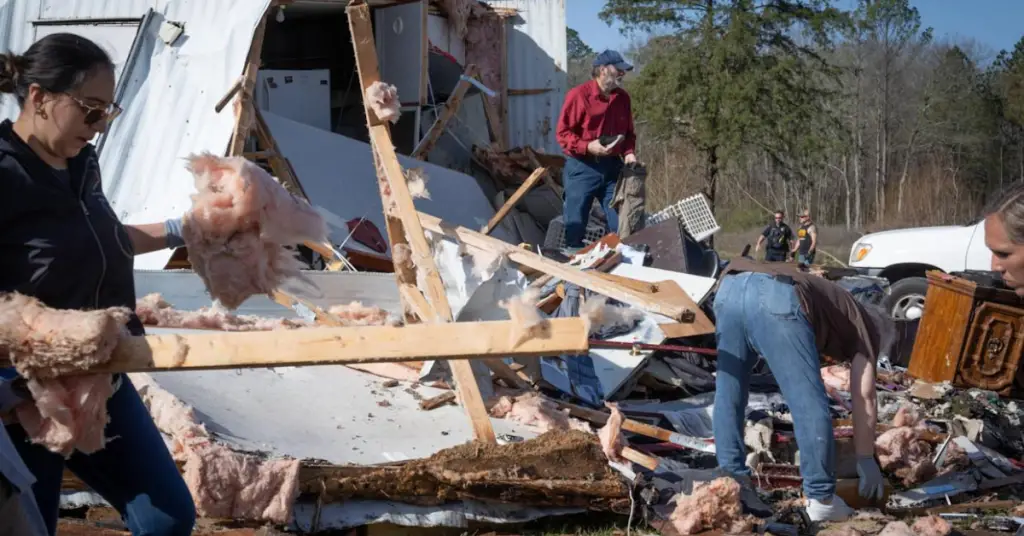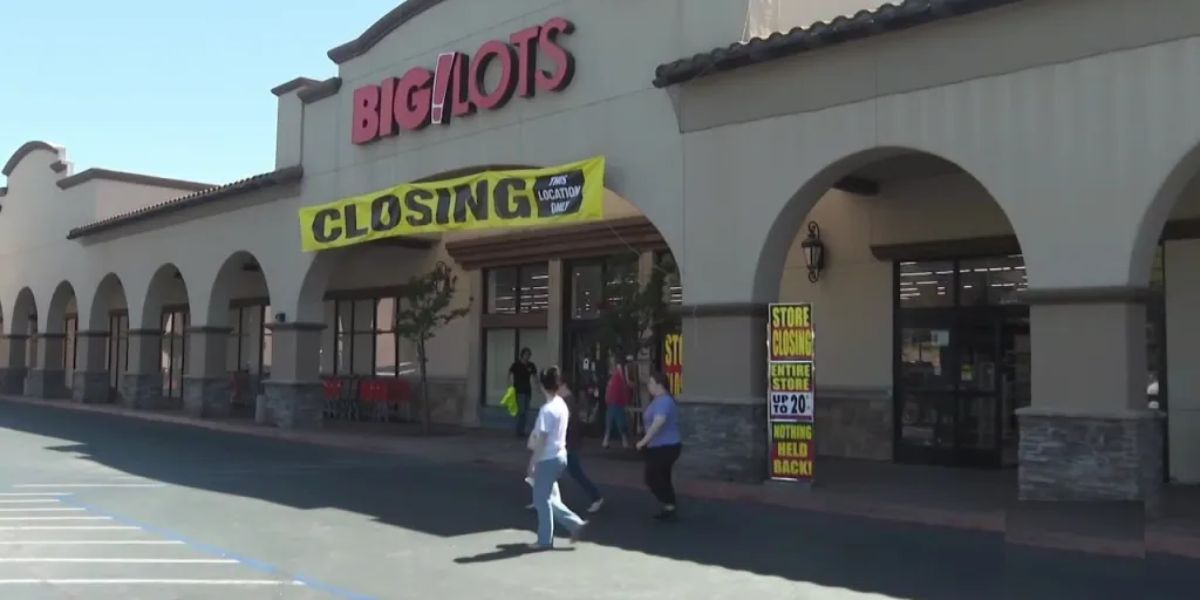A deadly storm system ripped through several states in the Midwest on the final day of March, bringing catastrophic destruction and highlighting the growing dangers posed by climate change. The powerful storm, marked by high winds, heavy hail, and ice, left widespread damage in its wake, knocking out power to hundreds of thousands of homes.
As authorities scramble to assess the full extent of the damage, the storm serves as a stark reminder of the deadly effects that extreme weather can have on communities, especially as the climate continues to warm.
What Happened?
On March 31, the storm tore through Michigan, Wisconsin, and Indiana, leaving a trail of destruction across the region. Wind speeds reached dangerous levels, while hail and ice caused further chaos. In Michigan, more than 300,000 homes lost power as trees were uprooted and power lines were snapped. In Wisconsin and Indiana, about 90,000 households were also left without electricity.
But the storm’s impact was even more tragic. In Michigan, three children were killed when a large tree crashed onto their minivan. In Indiana, two people lost their lives due to the extreme weather conditions. Local officials reported that the severity of the storm came as a complete surprise, as high winds arrived quickly and caught people off guard.
Kalamazoo County Sheriff Richard Fuller described the force of the storm, emphasizing the helplessness that many experienced: “High winds…came down fast. There’s really nothing anybody could’ve done. No vehicle would have stood up to this.”
Why Does This Matter?
The storm’s destructive impact underscores the growing urgency of addressing the challenges posed by climate change. While scientists are still cautious about linking specific weather events to climate change, they acknowledge that the warming atmosphere is making extreme weather events more frequent and severe.
The effects of a changing climate are already evident, from deadly heat waves to more intense storms. The storm in the Midwest is just one example of how unpredictable and dangerous weather can become as global temperatures rise.

The deadliness of the March storm highlights the risk that extreme weather events pose to communities, particularly when they happen unexpectedly. In addition to the lives lost, the storm left thousands of people stranded without power and created significant disruptions to everyday life. Such events are expected to become more common as climate change accelerates, making it all the more crucial to prepare for future weather-related disasters.
The Link Between Storms and Climate Change
While it’s difficult to link any single storm to climate change directly, experts agree that the warming planet is contributing to the intensification of extreme weather events. As the Earth’s atmosphere warms, it holds more moisture, which can fuel more powerful storms. In thunderstorms, the difference in temperature between the surrounding air and the air falling from the storm can cause stronger downdrafts and more intense winds at the surface.
A study conducted in 2023 found that small, localized wind events like those seen during the March storm are intensifying because of the changing climate. “You can store more moisture in a warmer atmosphere, so you can evaporate more. This means that the temperature difference between the surrounding air and the air that falls out of the thunderstorm is getting bigger, which causes a stronger downdraft and a stronger wind at the surface,” said Andreas Prein, a scientist at the National Center for Atmospheric Research.
Prein went on to explain that the frequency of derechos and other straight-line wind events has increased significantly in recent years, and there is no sign of this trend slowing down. These events, characterized by powerful winds moving in a straight line, are becoming more common and more severe due to the effects of climate change.
What Can Be Done About It?
The increasing frequency and intensity of extreme weather events have led many experts to call for stronger measures to prepare for and mitigate the impact of storms like the one that hit the Midwest. One key step in this effort is fortifying infrastructure to withstand extreme weather conditions. Improved building codes and better construction standards can help ensure that homes, roads, and other structures can endure high winds and other challenges posed by severe weather.
In addition, better weather forecasting and more accurate early warning systems are crucial for saving lives during extreme weather events. For example, if local governments and residents had received more timely and detailed alerts about the storm, they may have been able to take steps to reduce its impact. As storm systems become more unpredictable and dangerous, reliable warning systems will be key in helping communities prepare.
One of the most effective ways to combat the increasing severity of extreme weather is by reducing the production of greenhouse gases, which are driving global warming. The primary contributors to these gases are the burning of fossil fuels for energy production, as well as agriculture and industrial activities. By reducing carbon emissions and transitioning to renewable energy sources, such as solar and wind power, it is possible to help slow down the pace of climate change and reduce the risk of future catastrophic storms.
The Role of Individuals
While large-scale solutions like infrastructure upgrades and policy changes are essential, individuals can also play a role in addressing climate change. Personal actions, such as reducing energy consumption, supporting clean energy alternatives, and advocating for climate-conscious policies, can help make a difference. Small steps like switching to energy-efficient appliances, using public transportation, or reducing waste can contribute to lowering an individual’s carbon footprint.
Additionally, people can support and vote for policies aimed at tackling climate change. Governments around the world are increasingly focused on reducing greenhouse gas emissions and promoting sustainable practices, and public support for such policies can help create real change.
Looking Ahead: The Need for Action
The tragic events in the Midwest serve as a stark reminder that the world is facing the immediate and devastating effects of climate change. As extreme weather events like storms, heatwaves, and floods become more common, governments, businesses, and individuals must take action to reduce the causes of climate change and prepare for future impacts.
By focusing on sustainable practices, reducing emissions, and investing in resilient infrastructure, we can work toward a safer, more stable future. However, time is of the essence, and urgent action is needed to prevent more lives from being lost to the growing threat of extreme weather.
Disclaimer: This article has been meticulously fact-checked by our team to ensure accuracy and uphold transparency. We strive to deliver trustworthy and dependable content to our readers.




